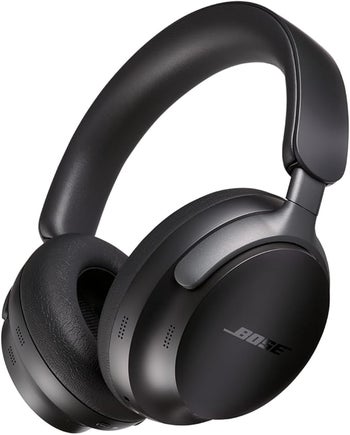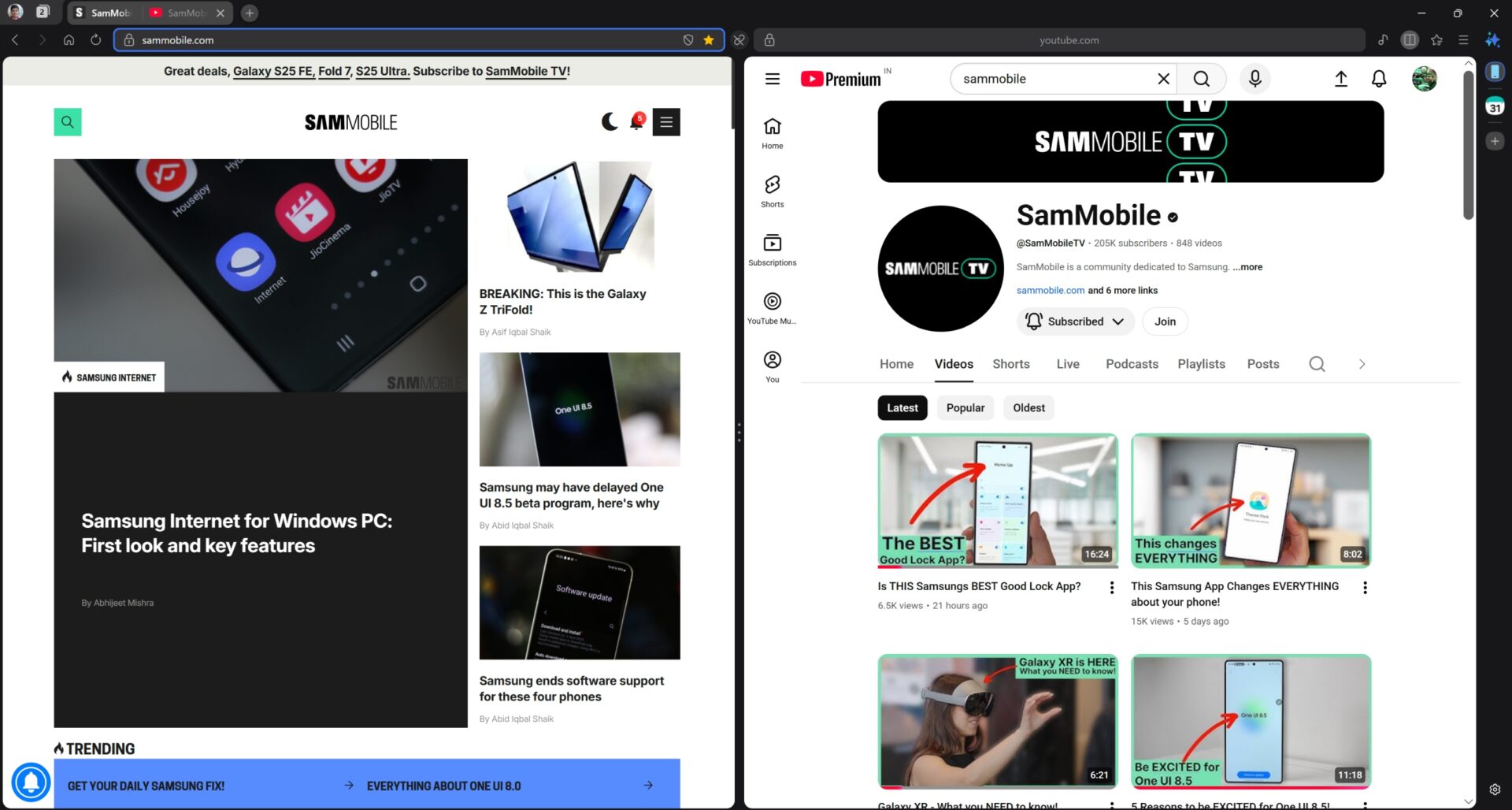
Why You Can Trust CNET
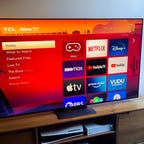
Best overall smart TV
TCL 6-Series Roku TV
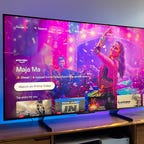
Second best overall smart TV
Hisense U8H Google TV
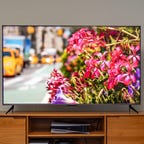
Best midpriced smart TV runner-up
Roku Plus Series
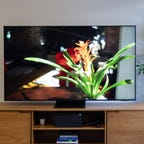
Best high-end smart TV that’s not an OLED
Samsung QN90B
Buying a new smart TV can be an overwhelming process — so many options and so much tech chatter, but it doesn’t have to be that complicated. These days, most new TVs come equipped with smart capabilities, which let you access streaming services such as Netflix and Disney Plus. And unlike TVs of the past, you won’t even need to get a dedicated streaming device like a Roku. But it can be hard to distinguish what separates a decent smart TV from an outstanding one, so we’re here to help.
While our reviews take smart TV systems into account, we think picture quality for the money is usually more important when buying a new TV. That’s because you can always “replace” the TV’s built-in system with a good streaming device, most of which cost less than $50. The exception is for budget TVs, where the price of the new streaming device can make up a significant percentage of the cost. For this list, we weighted the importance of the smart TV system higher for budget model TVs.
At CNET, I review TVs side by side in a state-of-the-art testing lab, taking hundreds of measurements with specialized equipment and comparing gaming, home theater and bright-room image quality. My 20 years experience as a TV reviewer helps me determine not just the best smart TV overall but also the best smart TV in your price range.
Our list below is generally arranged in order of which TVs provide the best picture for the money, but we also note how much we like (or dislike) the built-in smart TV system.
What is the best smart TV right now?
The TCL 6-Series Roku TV sits at the top of our list of best TVs and smart TVs for a number of reasons. It offers superb picture quality, an affordable price tag and Roku, the best smart TV system. It also includes gaming features like 4K/120Hz input and variable refresh rate that can get the most out of consoles like the PS5 and Xbox Series X. When a friend asks me what TV to buy from 55 to 85 inches, and money is still an object, I tell them to get the TCL 6-Series.
There are plenty of other excellent choices out there, however, so even though the 6-Series is my current favorite for most people, it might not be right for your preferences or budget.
Best smart TVs in 2024
Editors’ choice
Show less
For the last five years the TCL 6-Series has been our favorite TV for the money, and the 2022 version — also known as the R655 series — is no exception. This TV has an excellent image thanks to mini-LED tech and well-implemented full-array local dimming that helps it run circles around just about any other TV at this price. It improves upon the previous R635 series with more gaming extras and a new center-mount stand that you can elevate to make room for a soundbar, although the new 85-inch size has standard legs. And finally, the Roku TV operating system is our hands-down favorite.
Pros:
- Relatively affordable
- Excellent overall image quality
- Roku smart TV is simple, capable
- Improved design with central stand
Cons:
- Some competing mini-LED TVs can get brighter
Note that in addition to the R635, which this TV replaces, other versions of the 6-Series were released in 2021 and remain on sale. The R646 series uses the Google TV operating system but otherwise has similar specifications to the R655 models reviewed here. The R648 series has 8K resolution and is significantly more expensive.
The prices shown below are for the 65-inch size.
Show expert take Show less
Show less
The picture quality of the TCL 4-Series Roku TV was only a slight step behind the Vizio V-Series (below) in our budget TV test, but we liked its Roku smart TV system better than Vizio’s SmartCast, so the TCL gets the top spot on this list. The 4-Series lacks the Dolby Vision, Bluetooth connectivity and AMD FreeSync with a variable refresh rate, all of which the Vizio offers, but in our book superior smart TV streaming is more important at the budget level.
Pros:
- Affordable
- Excellent smart TV system
Cons:
- Image quality and features lag some entry-level TVs
Note that TCL has been selling the 4-Series for the last few years with little to no change in image quality or features in our tests, although it has recently added some larger screen sizes, including an 85-inch option.
The prices shown below are for the 50-inch size.
Show expert take Show less
Show less
The C2 represents the pinnacle of picture quality at a price that’s admittedly high, but not too crazy. It beats any non-OLED TV on this list, including the Samsung QN90B below, with its perfect black levels, unbeatable contrast and superb off-angle viewing. It also has superb gaming features, making it the perfect companion to an Xbox Series X or S, PlayStation 5 or both. The C2 comes in a wide variety of sizes as well, although the bigger models are really expensive.
Pros:
- Better picture quality than any non-OLED TV
- Superior contrast and off-angle image
- Best-in-class gaming features
- Sleek styling with ultralight, thin panel
Cons:
- Expensive
- No major picture quality improvements over the C1 from 2021
The C1 was also an excellent TV that delivered similar image quality and features to the C2. We’ve also reviewed the 2023 version, the LG C3, but we recommend the C2 instead right now. Going with last year’s LG OLED saves you a few hundred bucks and the two TVs were basically indistinguishable in features, design and image quality in my tests. The C2 will sell out over the summer and heading into the TV buying season this fall, while the C3 will drop in price, but if you want a high-end TV right now, grab a C2.
The prices shown below are for the 65-inch size.
Show expert take Show less
Show less
Among midpriced models we liked the TCL 6-Series just a little better in our side-by-side comparison, but this Hisense is a strong contender. Its excellent image quality is anchored by best-in-class brightness that improves its bright-room picture quality and makes HDR TV movies, shows and games really pop. It’s actually brighter than the TCL with better contrast, but the TCL’s slightly more accurate image gave it the edge overall. The Hisense uses Google TV instead of Roku, and unlike the TCL, the U8H includes an ATSC 3.0 tuner. Frankly, you can’t go wrong with either one.
Pros:
- Relatively affordable
- Excellent overall image quality
- Best-in-class bright room picture
- Capable Google TV system
Cons:
- Slightly less refined image than some competitors
- “Theater” picture modes engage motion smoothing by default
This is a 2022 model, but the 2023 version, the U8K series, looks largely similar aside from the addition of a 75-inch option. We haven’t reviewed it yet. It’s currently a couple of hundred dollars more expensive than the U8H.
The prices shown below are for the 65-inch size.
Show expert take Show less
Show less
When we compared the best budget TVs, the picture quality of Vizio V-Series clearly emerged as the leader of the pack. The Vizio offered the most balanced and accurate picture during our comparisons, and it comes with some useful extras such as Dolby Vision support, Wi-Fi 6E, Bluetooth compatibility and variable refresh rate for potentially smoother gaming.
The biggest downside of the Vizio is its smart TV platform, Vizio SmartCast. It’s crowded, slow and littered with ads for platforms such as Tubi and Kidoodle TV. That’s why the TCL 4-Series with Roku gets the top slot. That said, if you value its image quality and extra features, you can always add a separate streaming device to this Vizio.
Pros:
- Solid image quality for en entry-level TV
- Lots of features, including VRR and Wi-Fi 6E
Cons:
- Poor built-in smart TV system
Vizio hasn’t announced a 2024 version of the V-Series yet. The prices shown below are for the 50-inch size.
Show expert take Show less
Show less
Competition among TVs in the middle pricing band is heating up, and the Plus Series is the latest entrant in 2023. Unlike the TCL Roku TVs higher on this list, this one is all Roku, with no other brands on board. It adds a couple of step-up extras, including QLED and full-array local dimming, which help deliver a better picture than the TCL 4-Series, for example. It’s not as impressive as the Vizio MQX, though, since it lacks 120Hz for gaming and worse picture quality overall. If you value those extras, then the Vizio is worth saving for, but if not the Roku Plus Series is a very good value.
Pros:
- Affordable
- Good picture quality thanks to local dimming
- Great smart TV system
Cons:
- Lacks 120Hz refresh rate and other gaming extras
- Not as bright as some similarly priced TVs
This is the first TV Roku has produced under its own brand, as opposed to partnering with a brand like TCL, Sharp, Pioneer or Hisense. The company also released a version with fewer features and no local dimming, called the Roku Select Series.
The price shown below is for the 65-inch size.
Show expert take Show less
Show less
Looking for a high-end TV with spectacular image quality, but don’t want an OLED? The Samsung QN90B is your best bet. This TV uses QLED TV tech augmented by mini-LED for a brighter image than any OLED TV. The spectacular contrast of OLED still won out in our side-by-side tests, but the QN90B QLED screen comes closer than ever.
The older version of this TV, the QN90A, remains on sale for hundreds less. It’s also an excellent performer but it’s slightly dimmer than the QN90B. It also lacks some of the 2022 model’s features, including the new game hub with cloud gaming.
Pros:
- Best non-OLED picture quality we’ve ever tested
- Incredible brightness with minimal blooming
- Stylish design, packed with features
Cons:
- Expensive
- Slightly worse contrast, off-angle and uniformity than OLED
Samsung produces a number of QLED TVs, but the QN90B is among the highest-end, aside from versions with 8K resolution. This is a 2022 model, but the 2023 version, the QN90C, looks very similar in terms of features and while we haven’t reviewed it, we expect it to deliver similar image quality. It’s also significantly more expensive.
The prices shown below are for the 65-inch size.
Show expert take Show less
Show less
Samsung is the brand that sells more TVs than anyone, and one of its most popular is the Q60 series. Its sleek QLED screen design stands out compared with the other TVs on this list — even though the ultrathin OLED models are sleeker — and it offers better features, image quality and more sizes than models like the TCL 4-Series and Sony X80K. The TVs listed in this article are all superior values, but if you want a Samsung TV and can’t afford the QN90A, this is a great choice.
Pros:
- Sleek design and excellent remote
- Bright image with solid contrast
- Informative status screen for gaming
Cons:
- More expensive than competing TVs with better picture quality
- Cluttered smart TV menus
This is a 2022 model, but the 2023 version, the Q60C, looks largely similar in terms of features, design and price. We haven’t reviewed it yet, but we expect it to have similar image quality.
The prices shown below are for the 65-inch size.
Show expert take Show less
Show less
The Vizio MQX is one of the least expensive TVs to feature full-array local dimming, which lets it reproduce TV shows, movies and games with enough contrast and pop to do HDR justice. The MQX has fewer dimming zones than more expensive TVs like the TCL 6-Series and Hisense U8H, but it offers 16 zones on the 50-inch, 30 on the 65-inch and 42 on the 75-inch, which is more than enough for excellent overall picture quality, with bright highlights, dark black levels, punchy contrast and accurate color.
Pros:
- Affordable
- Excellent picture quality
- Game-friendly extras like variable refresh rate and 4K/120Hz input
Cons:
- Weak smart TV system
- Slightly more expensive TVs perform better
Unlike the M7 from 2021, the MQX has a true 120Hz refresh rate, which allows compatibility with 4K/120Hz signals from game consoles like the Xbox Series X and PlayStation 5, and it worked well in our tests. Vizio supports both major HDR formats, HDR10 and Dolby Vision, in the M-Series. If you can’t save up for the TCL or the Hisense but want a better picture than the TCL 4-Series or Vizio V-series, the Vizio MQX is an excellent happy medium.
Vizio hasn’t announced a 2024 version of this TV. The prices shown below are for the 65-inch size.
Show expert take Show less
Our TV reviews follow a rigorous, unbiased evaluation process honed over nearly two decades of TV reviews. Our primary TV test lab has specialized equipment for measuring light and color, including a Konica Minolta CS-2000 spectroradiometer, a Murideo Sig-G 4K HDR signal generator and an AVPro Connect 8×8 4K HDR distribution matrix. We use Portrait Displays CalMan Ultimate software to evaluate every TV we review. In every CNET TV review, three or more similar TVs are compared side by side in various lighting conditions playing different media, including movies, TV shows and games, across a variety of test categories, from color to video processing to gaming to HDR. Our reviews also account for design, features, smart TV performance, HDMI input and gaming compatibility, and other factors.
One important aspect of image quality we test is overall brightness. Here’s how it compares in nits across select TVs listed above.
Light output in nits
undefined
| TV | Brightest mode (HDR) | Accurate mode (HDR) | Brightest mode (SDR) | Accurate mode (SDR) |
|---|---|---|---|---|
| Samsung QN65Q90B | 3,316 | 1,981 | 2,625 | 974 |
| Hisense U8H | 1,867 | 1,867 | 1,605 | 1,605 |
| TCL 65R655 | 1,387 | 1,194 | 1,292 | 624 |
| Vizio M65QXM-K03 | 939 | 742 | 958 | 608 |
| LG OLED65C2 | 812 | 759 | 413 | 389 |
| Roku TV Plus (65-inch) | 514 | 455 | 579 | 404 |
Check out our explainer on how we test TVs for more details.
With all of the TVs available today, and all of the technical terms and jargon associated with television technology, it can be tough to figure out what’s important. Here’s a quick guide to help cut through the confusion.
Price: TVs range in price from $100 to more than $2,000. Smaller screens are cheaper, well-known brands are more expensive and spending more money can also get you better image quality. Most entry-level TVs have a good enough picture for most people, but TVs last a long time, so it might be worth spending more to get a better picture. It’s also best to shop for a TV in the fall, when prices are lower.
Screen size: Bigger is better in our book. We recommend a size of at least 43 inches for a bedroom TV and at least 55 inches for a living room or main TV — and 65 inches or larger is best. More than any other “feature,” stepping up in TV screen size is the best use of your money. One of the most common post-TV-purchase complaints we’ve heard is from people who didn’t go big enough. And we almost never hear people complain that their TV is too large.
Capability: Among entry-level TVs the most important feature is what kind of smart TV system the TV uses. Among midrange models, look for a feature including full-array local dimming, mini-LED and 120Hz refresh rate, which (unlike some other extras) do help improve the picture in our experience. And among high-end TVs, OLED technology is your best bet.
For more TV buying advice check out our guide on how to buy a TV.
We’ll post the answers to commonly asked TV questions below. If you have any others, feel free to reach out on Twitter (@dkatzmaier), or by clicking the little envelope icon on my CNET profile page.
What’s the best smart TV system for streaming?
What about Amazon Fire smart TVs?
Do smart TVs come with Alexa and Google?
How big a TV should I get?
How do I get the best TV sound?





